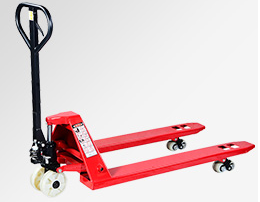News Details
The key to efficient handling is the precise lifting and lowering of the fork of a manual hydraulic transport vehicle
The fork of a manual hydraulic transport vehicle is a key component for achieving efficient cargo handling. It is usually made of high-strength steel and has excellent load-bearing capacity, making it easy to handle various heavy objects. The length and width of the fork are carefully designed to accommodate pallets or goods of different sizes, ensuring stable support for the goods during transportation.

When it is necessary to lift the fork, the operator only needs to repeatedly press the manual hydraulic pump handle located on one side of the transport vehicle. This action will drive the hydraulic system to work, injecting hydraulic oil into the cylinder. Under the action of oil pressure, the fork will rise steadily. During the operation, one can clearly feel that the force of the handle pressing down is closely related to the amplitude of the fork lifting. The faster the pressing frequency, the faster the fork lifting speed, allowing the operator to accurately control the fork height according to actual needs.
To lower the fork, simply gently turn the pressure relief handle located near the fork. At this point, the hydraulic oil in the cylinder will flow back under the weight of the cargo, causing the fork to slowly descend. The entire descent process is also controllable, and the operator can adjust the return speed of hydraulic oil by controlling the opening and closing degree of the pressure relief handle, thereby achieving a smooth and precise descent of the fork to the desired height, ensuring the safe and accurate placement of the goods in the designated position.

